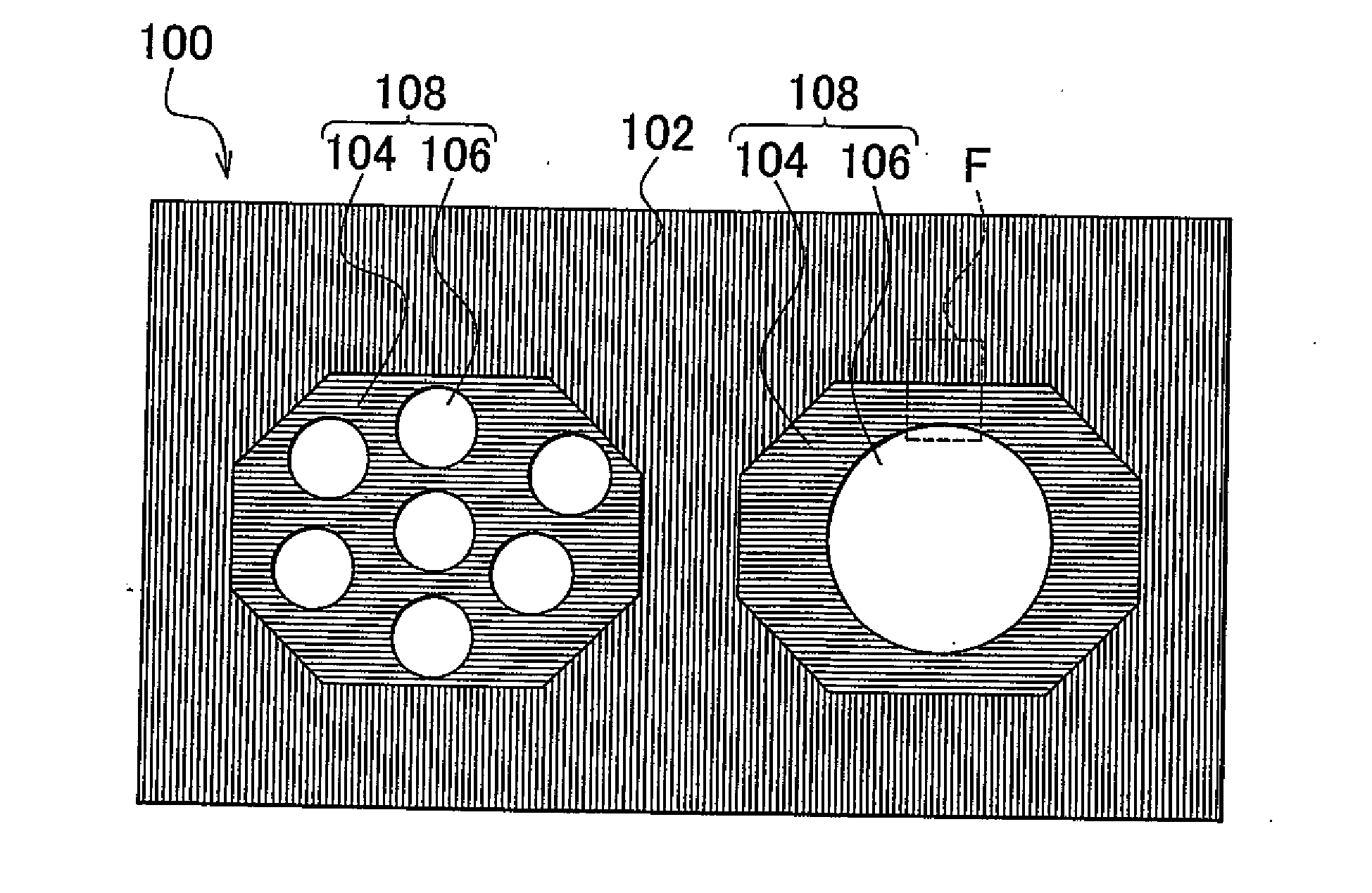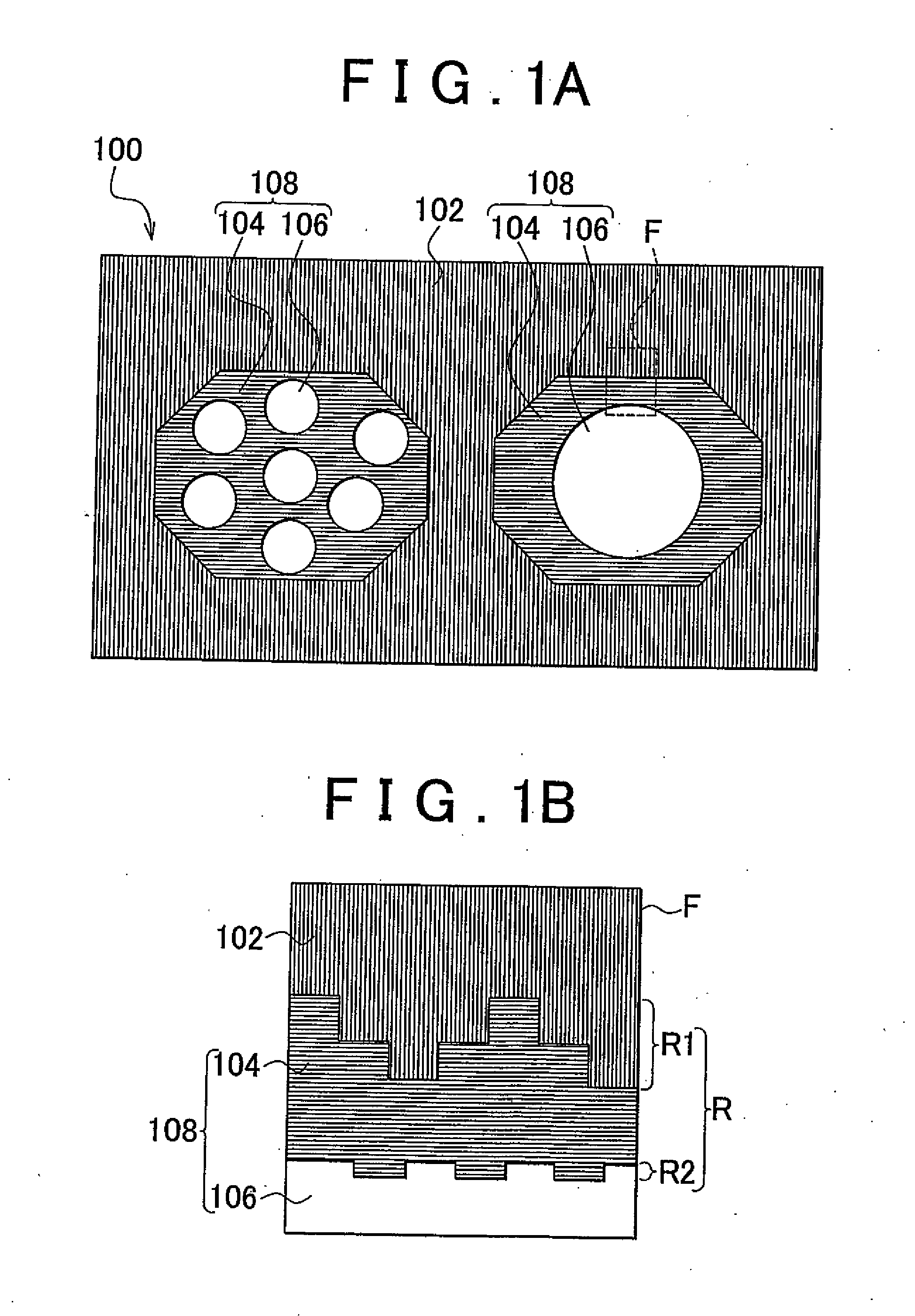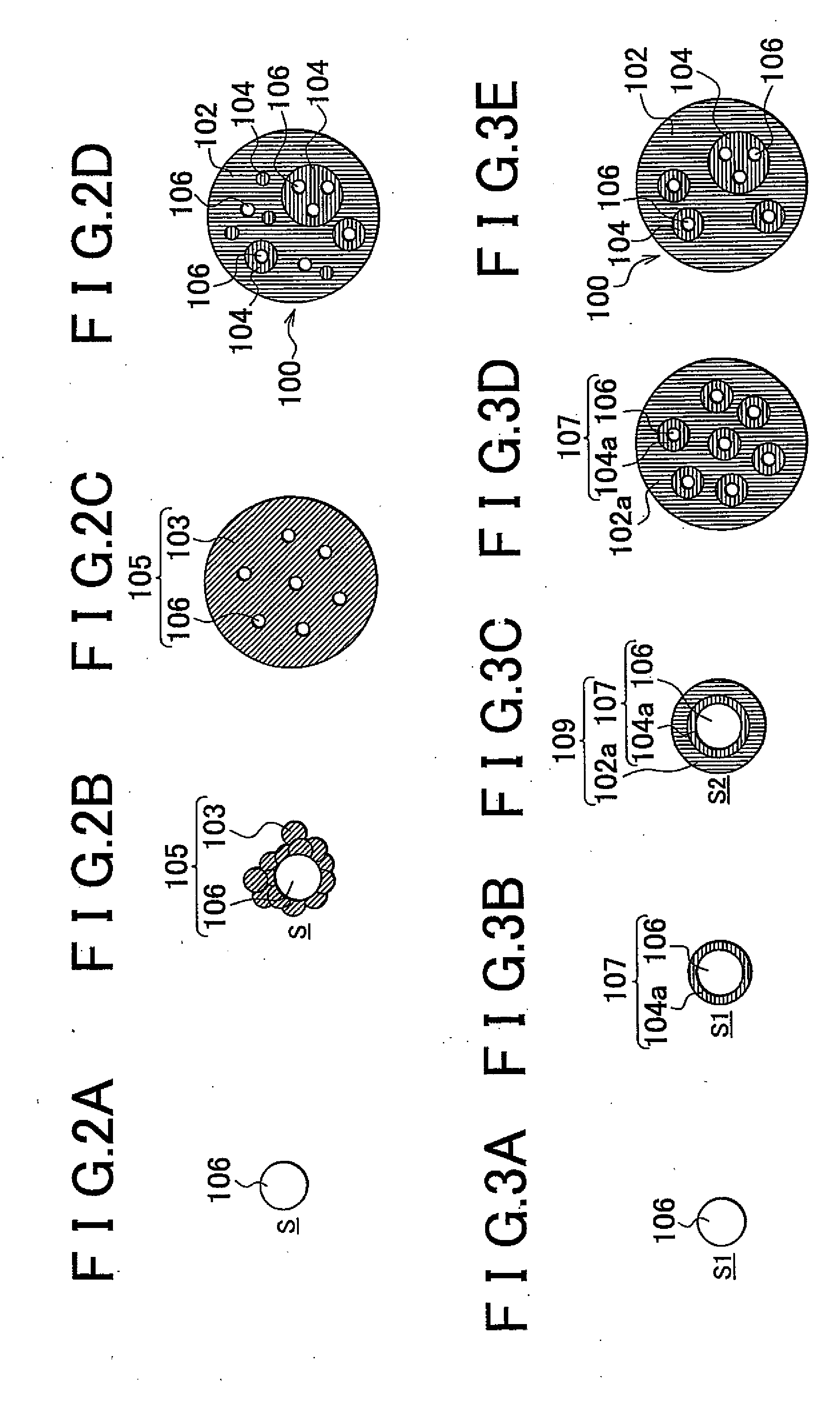Nanocomposite thermoelectric conversion material and method of producing the same
a thermoelectric conversion material and nanocomposite technology, applied in the direction of non-metal conductors, conductors, organic conductors, etc., can solve the problems of inability to further increase the roughness of the interface, the need for further reduction of thermal conductivity, etc., to achieve the effect of increasing thermoelectric conversion performance, reducing thermal conductivity, and being a new structur
- Summary
- Abstract
- Description
- Claims
- Application Information
AI Technical Summary
Benefits of technology
Problems solved by technology
Method used
Image
Examples
first example
[0058]A nanocomposite thermoelectric conversion material described below was produced using the first production method according to the invention.
[0059]The configuration of the produced nanocomposite thermoelectric conversion material is as follows. A matrix was (Bi, Sb)2Te3. Amorphous particles were SiO2. Amorphous films were Sb2O3.
[0060]First Step
[0061]0.28 g of silica (SiO2) particles whose average diameter was 5 nm were dispersed in a solution produced by dissolving 0.4 g of bismuth chloride (BiCl3), 2.56 g of tellurium chloride (TeCl4), and 1.34 g of antimony chloride (SbCl3) in 100 ml of ethanol.
[0062]Second Step
[0063]Reduction was caused by dropping, into the above-described solution, a reducing agent produced by dissolving 2.5 g of NaBH4 in 100 ml of ethanol. Thus, ethanol slurry was produced. In the ethanol slurry, nanoparticles of silica (SiO2) were dispersed in the matrix-precursor made of the thermoelectric conversion material whose composition was (Bi, Sb)2Te3, and whi...
second example
[0075]The nanocomposite thermoelectric conversion material with the same configuration as the configuration of the nanocomposite thermoelectric conversion material in the first example was produced using the second production method according to the invention.
[0076]First Step
[0077]0.15 g of silica (SiO2) particles whose average diameter was 5 nm were dispersed in the first solution S1 produced by dissolving 0.32 g of antimony chloride (SbCL3) in 100 ml of ethanol.
[0078]Second Step
[0079]Reduction was caused by dropping, into the above-described first solution S1, a reducing agent produced by dissolving 0.6 g of NaBH4 in 100 ml of ethanol. As a result, Sb was precipitated on the surfaces of the silica (SiO2) nanoparticles to produce the films, and thus, the first nanocomposite particles were produced. The amounts of the first solution S1 and the reducing agent were adjusted so that the thickness of the Sb films became several nm.
[0080]Third Step
[0081]The first nanocomposite particles ...
PUM
 Login to View More
Login to View More Abstract
Description
Claims
Application Information
 Login to View More
Login to View More - R&D
- Intellectual Property
- Life Sciences
- Materials
- Tech Scout
- Unparalleled Data Quality
- Higher Quality Content
- 60% Fewer Hallucinations
Browse by: Latest US Patents, China's latest patents, Technical Efficacy Thesaurus, Application Domain, Technology Topic, Popular Technical Reports.
© 2025 PatSnap. All rights reserved.Legal|Privacy policy|Modern Slavery Act Transparency Statement|Sitemap|About US| Contact US: help@patsnap.com



